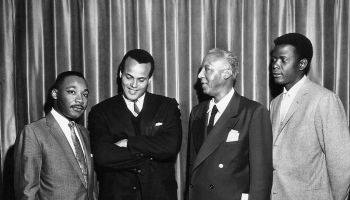(Picture courtesy of @odyssey)
After a 9.0 magnitude earthquake triggered a Tsunami, which wiped out the entire northern region, the Japanese are now facing fears of a nuclear meltdown.
In the past three days the Fukushima power plant has been at the center of this recent crisis. The Fukushima power plant was rocked by an explosion one day after the earthquake. The roof of the reactor building was blown off, releasing radiation in the air.
With every passing day the situation is becoming more dangerous and extremely critical. Fearing the worst, a nuclear meltdown would make Japan’s current condition even more catastrophic. So what happens in a nuclear meltdown?
A meltdown occurs when a nuclear power plant system prevents proper cooling of the reactor core. This would mean the nuclear fuel assemblies would overheat and melt. Japan’s Fukushima plant has three reactors, all reaching high levels of overheating. This has resulted in authorities being forced to vent radioactive steam into the air to relieve reactor pressure.
A core meltdown will also make the reactor unstable until it is repaired. To prevent a core meltdown and overheating, Japanese authorities have poured sea water in all three of the reactors to cool them down. The key component in any nuclear plant is the cooling system. The loss of sufficient cooling for the nuclear fuel within the reactor core can result in a meltdown.
Hopefully Japan escapes a deadly nuclear meltdown and isn’t faced with the same fate as Chernobyl or Yucca Flat.
Chernobyl, April 26, 1986
Where: One of the worst nuclear disaster in history, Chernobyl was classified as a level 7 “major accident”.
What Happened: The meltdown occurred during a systems test when a sudden power surge led the nuclear reactor to rupture, creating a series of violent explosions and eventually sending a plume of radioactive dust into the atmosphere.
Result: 50 deaths were reported, all reactor staff and emergency workers, but a U.N. report says the incident will ultimately claim as many as 4,000 deaths.
[pagebreak]
Kyshtym Explosion September 29, 1957
Where: The Mayak nuclear power plant in the city of Kyshtym in the former Soviet Union.
What happened: The cooling system in one of the tanks containing around 70-80 tons of radioactive waste failed, causing the temperature to rise, resulting in a non-nuclear explosion of dried waste that released a significant amount of radioactive material into the atmosphere.
Result: 800 square kilometers were contaminated and the Soviet government neglected to inform people in affected areas. They were then forced to evacuate 10,000 people one week later when people’s skin literally began melting off their faces. It is estimated that at least 200 people died of cancer caused by direct exposure to radiation.
[pagebreak]
Three Mile Island, March 28, 1979
Where: Three Mile Island Nuclear Generating Station in Dauphin County, Pennsylvania
What Happened: A partial core meltdown resulting in the release of 13 million curies of radioactive gases. The core overheated, reaching 4,300 degrees Fahrenheit.
Result: The meltdown led to no deaths or injuries to plant workers or members of the nearby community.
[pagebreak]
Yucca Flat, December 18, 1970
Where: Nevada’s Yucca Flat, located 65 miles from Las Vegas.
What Happened: In the 1970’s a 10-kiloton nuclear device was detonated beneath the Yucca Flat. However the plug sealing the shaft from the Flat’s surface burst open, flooding the atmosphere with radioactive matter.
Result: Eighty-six workers at the site were exposed to radiation.
[pagebreak]
Bohunice Nuclear Plant, February 22, 1977
Where: The Bohunice nuclear power plant in Jaslovské Bohunice, Czechoslovakia
What Happened: In 1977 a level 4 accident during a fuel change caused less heat to be transmitted to coolant gas, resulting in the fuel overheating. Eventually, the nuclear reactor suffered severe corrosion, and a large quantity of radioactive gases were released into the plant area.
Result: The incident was covered up by the Soviet government and the plant was decommissioned and shut down two years later.
[pagebreak]
Goiania, September 13, 1987
Where: Goiás, Brazil
What Happened: Two men scavenged a billiard ball-size capsule of highly radioactive cesium chloride from the Instituto Goiano de Radioterapia. The men, thinking it had junkyard value, opened the capsule, emitting radioactive material, and then sold it to a junkyard owner.
Result: About 130,000 people visited hospitals and 250 people were contaminated by radioactive residue, 20 of them requiring treatment for radiation sickness. Four people died from exposure to radiation, including the two men who found the capsule, the wife of the junkyard owner who purchased the capsule.
[pagebreak]
Windscale Fire, October 10, 1957
Where: Great Britain
What Happened: At Windscale, Cumberland, the graphite core of a nuclear reactor caught fire. Operators of the core put out the fire with water, but not until a substantial amount of radiation was released into the nearby countryside.
Result: Prime Minister Harold Macmillan tried to cover up the seriousness of the accident, but a recent study estimated that the radiation led to 240 cases of cancer.
















